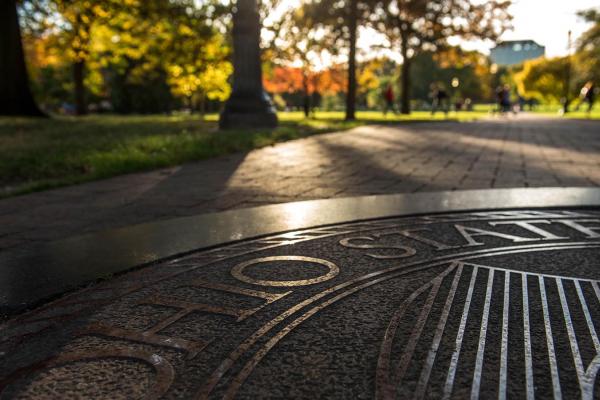Who are the Shi'is?

The name Shi'ite, or Shi'i, or Shi'ah in Arabic, means "partisan", or “supporter” of Ali as legitimate successor of the Prophet Muhammad. Shi'is are also sometimes called Fatimis, or Fatimids, because they all regard the lineage through the Prophet Muhammad's daughter Fatima and her husband 'Ali to be of particular importance. There is a Shi'i tradition of wearing a black turban if one is a descendent in this line. Both Sunnis and Shi’is respect the descendents of the Prophet and call them Sayyids or Sherifs, meaning “noble”.
There are many diverse Shi'i communities around the world. In this post we'll explain how what started as a political difference, became a matter of religious and political doctrine, and eventually diversified further and created a variety of religious communities. With the spreading of these communities around the world, cultural practices and differences between each of the groups were shaped in their local contexts, as well. Thus, religious cultural practices often overlap with the local cultural practices. We'll also compare Shi's to Sunnis within all three aspects: political; doctrinal; and cultural. The major Shi'i groups are:
Twelver/Ithna'ashari/Imami
Sevener/Saba'ia/Ismaili/Aghakhani
Fiver/Zayyidi
Minority sects, historically related to Shi'ism:
Druze;
Yazidi;
Alawi
There are a lot of theological similarities between Shi'is and Sunnis - more than one might expect, considering their historical disagreements.
-the Qur'an is the same, word for word for both sects
-prayer is the same - same times of day, same direction, etc - minor differences are that Sunnis fold their arms when they pray, while shi'i let them hang, and some Shi'i Muazans add the phrase 'Ali Wali Ullah ('Ali is the Viceroy of God) at the end of Azan, or the call to prayer.
The Political Disagreement: Prophet Muhammad’s Khulafa (Caliphs) or Successors after his Death in 632 AD
The first four caliphs, Abu Bakr, Omar, Uthman and Ali were selected by shura (community council) and functioned as temporal leaders of the newly-founded Muslim community. They were followed by non-elected dynastic rulers of the ‘Umayyid, Abbasid, and Ottoman kings and sultans continued to be called Caliphs by most Muslim Sunnis until the abolishing of the caliphate in 1924.
After the death of Muhammad in 632, the supporters of Ali (Muhammad’s cousin and son-in-law) of Muhammad, rejected the elective of selective process of caliphate by shura and claimed that the leader of Muslims must be a member from the household of the prophet. These supporteres of Ali, or Shiat-ul-Ali (supporters of Ali) supported the institution of Imama (imamate). Sunnis supported the institution of Khalifa (caliphate). According to Shi’i teachings, a direct descendent of Muhammad through his daughter fatima and Son-in-Law Ali must be the Imama or leader of the Muslims. In the absence of a direct descendent (12th imam disappeared in 874) an Imam’s role will be fulfilled by Shi’i Mujtahids (Shi’i Jurist Scholars or Ayatollahs).
Upon the prophet's death his messengership ended, but someone needed to continue the statesmanship he provided. His successor would therefore not be a messanger of God, but a political leader.
The Sunnis are how we refer to the group of Muslims who convened a meeting, or shura, to decide who the community would appoint as the new leader. As you may know, the religion of Islam began in the Arabian peninsula among the peoples of Mekka and Medina. The tradition of shura, or the Arabic word for consultation, was a long-standing tradition. It is a meeting convened for the purpose of deliberation and decision-making on issues concerning the group.
They chose the prophet's close associate, Abu Bakr. The case for him was made based on the following points:
- he was very close to the Prophet, perhaps his most intimate friend, and the father of the Prophet's favorite wife, A'isha.
- he was accustomed to leading congregational prayer.
- he was known to be trustworthy.
There were those, however, who disagreed with this decision. They considered 'Ali to be the appropriate choice, which is why we call them Shi'i, or partisans - they were the partisans of 'Ali. The case for 'Ali was made based on the following points:
- He was the Prophet's closest male relative, being his cousin and the husband of his daughter Fatima.
- 'Ali was frequently consulted on matters of Islam
- After Khadija, he was the first convert.
The Formation of the Shi'i Sects
Hussain was 'Ali's grandson, and he made a claim on leadership, finally dying at the battle of Karbala in 680. After that, the lineage continued, with claims on the Imamate, but there were contestations - see this chart.
Two of Ja'afar's sons claimed to be Imams - one was Isma’il. The followers of him are the Ismails, or the Seveners reside in Pakistan, North Africa, Central Asia, including North East Afghanistan and the mountains of Tajikistan. They have a living Imam, Karim Ali Khan, or Karim Agha Khan. Thus, in Afghanistan and other countries they are also sometimes called Aghakhanis. In 874 Muntazar, the 12th Imam disappeared. His followers, the Twelvers, consider him to be the rightful Imam, and expect he will return. Because of this they are often called Imami Shi'i. In the absence of the 12th Imam, Shi’i argue that Shi’a Jurist scholars or Mujtahids should fill the position of Imam; that is, until the reappearance of the 12th Imam.
